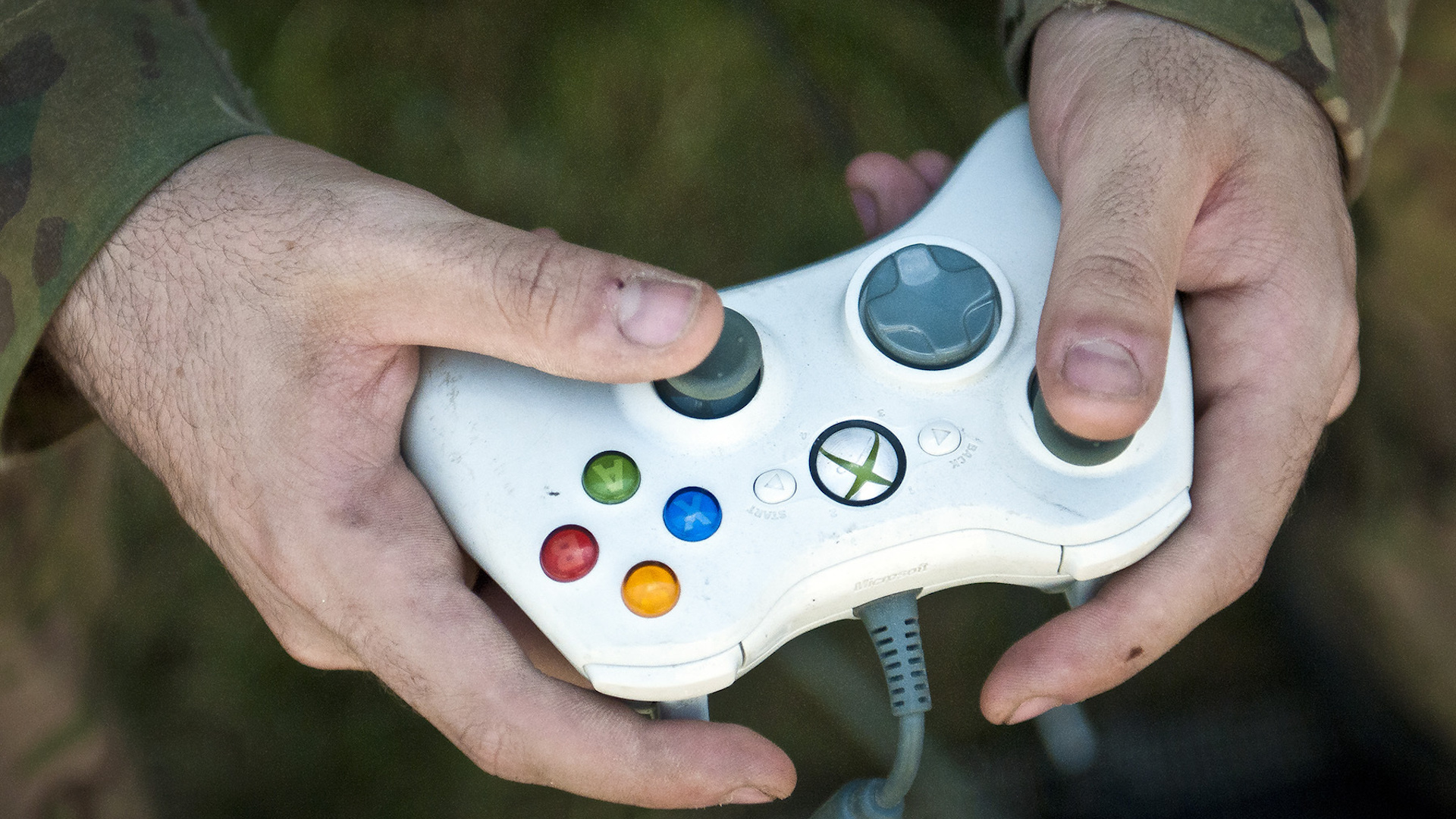

At least two next-generation weapons systems the U.S. military is investing heavily in ahead of the next big war are operated in part through Xbox-style video game controllers.
The Defense Department’s fiscal year 2024 budget request, released last week, includes $154.5 million for the procurement of 24 Navy/Marine Expeditionary Ship Interdiction System (NMESIS) launchers as the Marine Corps’ first ground-based anti-ship missile capability.
Mounted to the back of the Joint Light Tactical Vehicle and capable of firing the Naval Strike Missile at targets at ranges of up to 100 nautical miles, Marine Corps leaders envision deploying the NMESIS to remote islands in the Indo-Pacific to quickly sink Chinese ships in the event of a future conflict.
As part of the same budget request, the DoD also wants $590 million for the procurement of Manuever-Short Range Air Defense (M-SHORAD) systems to provide mobile air defense against airborne drones, rotary-wing aircraft, and incoming rocket, artillery, and mortars fire, a four-fold increase over last year’s budget request for the system.
Mounted on the Army’s Stryker armored fighting vehicles and boasting turret-mounted Stinger and Hellfire missiles and a 30mm XM914 chain gun, the Army has been investing heavily in M-SHORAD capabilities since the Russian annexation of Crimea in 2014, and the need for such capabilities has only grown following the former’s invasion of Ukraine last year.
Subscribe to Task & Purpose Today. Get the latest military news, entertainment, and gear in your inbox daily.
So what do these two somewhat disparate capabilities have in common, besides their essential roles in the next big conflict against a conventional military force like Russia or China? Something surprisingly elegant: they’re both operated using two-pronged control systems that look as if they were ripped from a commercial video game console.
A recent Stars and Stripes story on the 5th Battalion, 4th Air Defense Artillery Regiment — the first in Europe outfitted with M-SHORAD systems — training at Grafenwoehr Training Area in Germany highlighted soldiers learning to operate the turret’s tracking system using “a device that looks like an Xbox controller.”
Similarly, photos published by the Defense Visual Information Distribution Service (DVIDS) in 2021 show Marines with the 1st Battalion, 12th Marines “driving” a NMESIS launcher at Pacific Missile Range Facility Barking Sands in Hawaii using a similar beige handheld controller.

It’s unclear if these two handheld systems are related. The Marine Corps did not respond to a request for comment, while an Army spokesman told Task & Purpose that the controller “is used on other systems as well” but declined to specify which systems in particular.
That the U.S. military is adopting control systems based on commercial off-the-shelf video game consoles should not come as a surprise, though. The Navy has adopted the off-the-shelf Xbox 360 controller for use on its Virginia-class submarines in recent years, and the Army has been exploring the use of these same controllers to operate small unmanned ground vehicles to carry out explosive ordnance disposal missions for more than 15 years.
Indeed, this trend isn’t limited to the U.S military: The British Army flaunted a Polaris MRZR all-terrain vehicle operated by an Xbox-style controller in 2017, and as recently as 2020, Israel Aerospace Industries showed off a brand new Carmel battle tank featuring a similar controller for all manner of systems, from steering and propulsion to the weapons turret mounted to the top of the armored vehicle.
“There are so many other systems out there that have something similar, from unmanned ground vehicles and beyond,” says Peter Singer, a fellow at the New America Foundation and the author of LikeWar: The Weaponization of Social Media who previously consulted on the Call of Duty series of video games.

For the Pentagon to design its proprietary control system based on video game consoles makes total sense given how many current (and future) U.S. service members grew up spending hours adapting to the familiar two-pronged handset of an Xbox or PlayStation.
“The gaming companies spent millions of dollars developing an optimal, intuitive, easy-to-learn user interface, and then they went and spent years training up the user base for the U.S. military on how to use that interface,” says Singer. “These designs aren’t happenstance, and the same pool they’re pulling from for their customer base, the military is pulling from … and the training is basically already done.”
As of 2017, a majority of Americans between the ages of 18 and 49 said they play video games “often or sometimes,” according to data from the Pew Research Center. More recent data from the Entertainment Software Association suggests that 64 percent of American adults (roughly 214.4 million people) play video games.
“Now you have multiple generations who have used the design” of popular video game consoler controllers, Singer said.
While the training logic behind adapting Xbox-style controllers for futuristic weapons systems is sound, Singer pointed to one potential complication: what happens when the next generation of American warfighters grows up on a popular video game system that breaks from the traditional double-pronged model?
“If you’re being inspired by video game controllers, then you need to keep pace with how those controllers change over time, and that’s one thing that might happen in the entertainment world that might also happen in the defense world,” Singer said. “I don’t see [virtual reality] taking off anytime soon, but we have to ask: how does our acquisition system keep up with that change?”
The latest on Task & Purpose
- The Army has finally fielded its replacement for its Vietnam-era armored personnel carriers
- Guards open fire after a car ran the gate at Naval Base Coronado
- Everything you need to know about Army Mountain Warfare School
- Fake Marine gets 70 months in prison for defrauding veterans charities
- US airman accused of insider attack in Syria cleared of all charges
